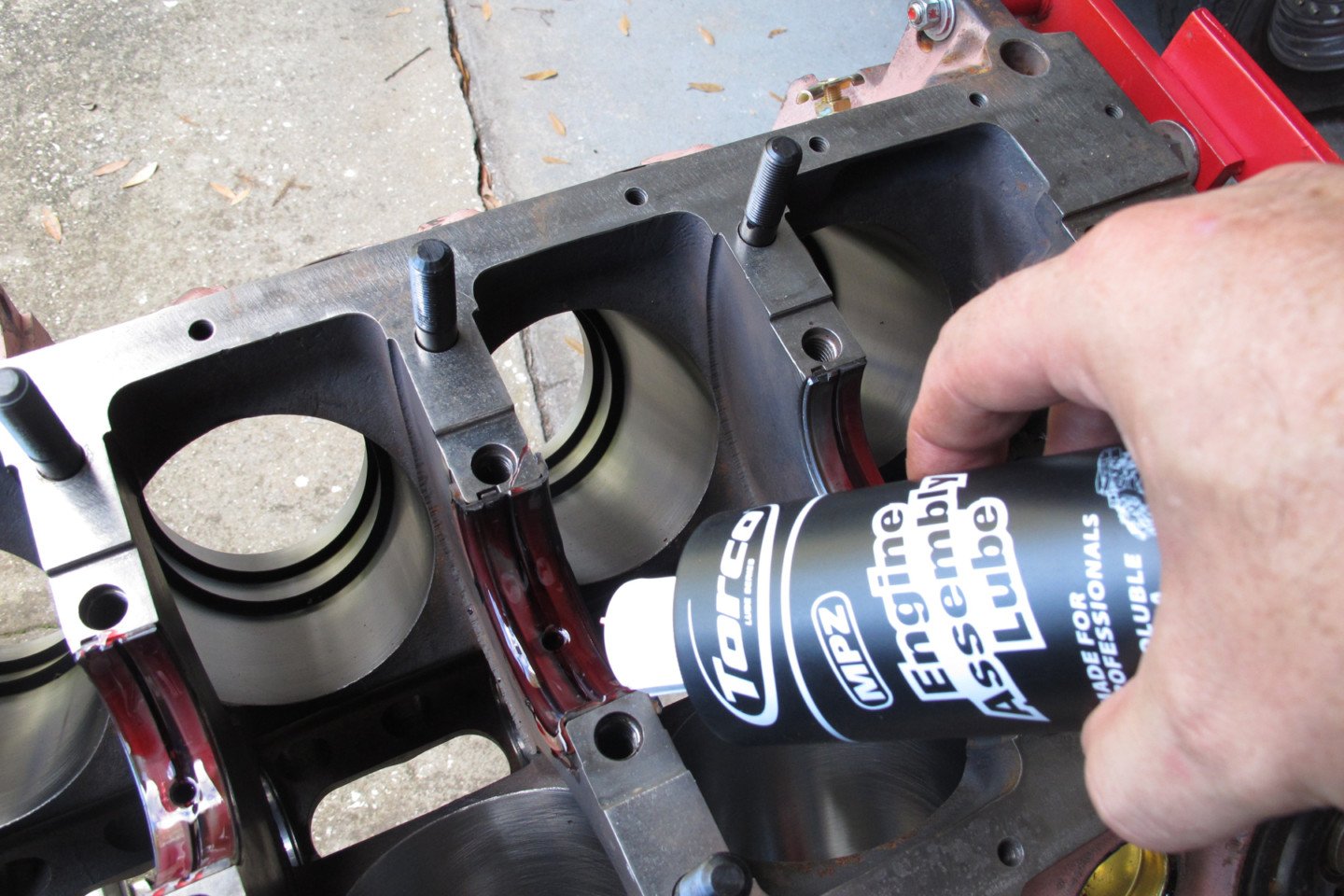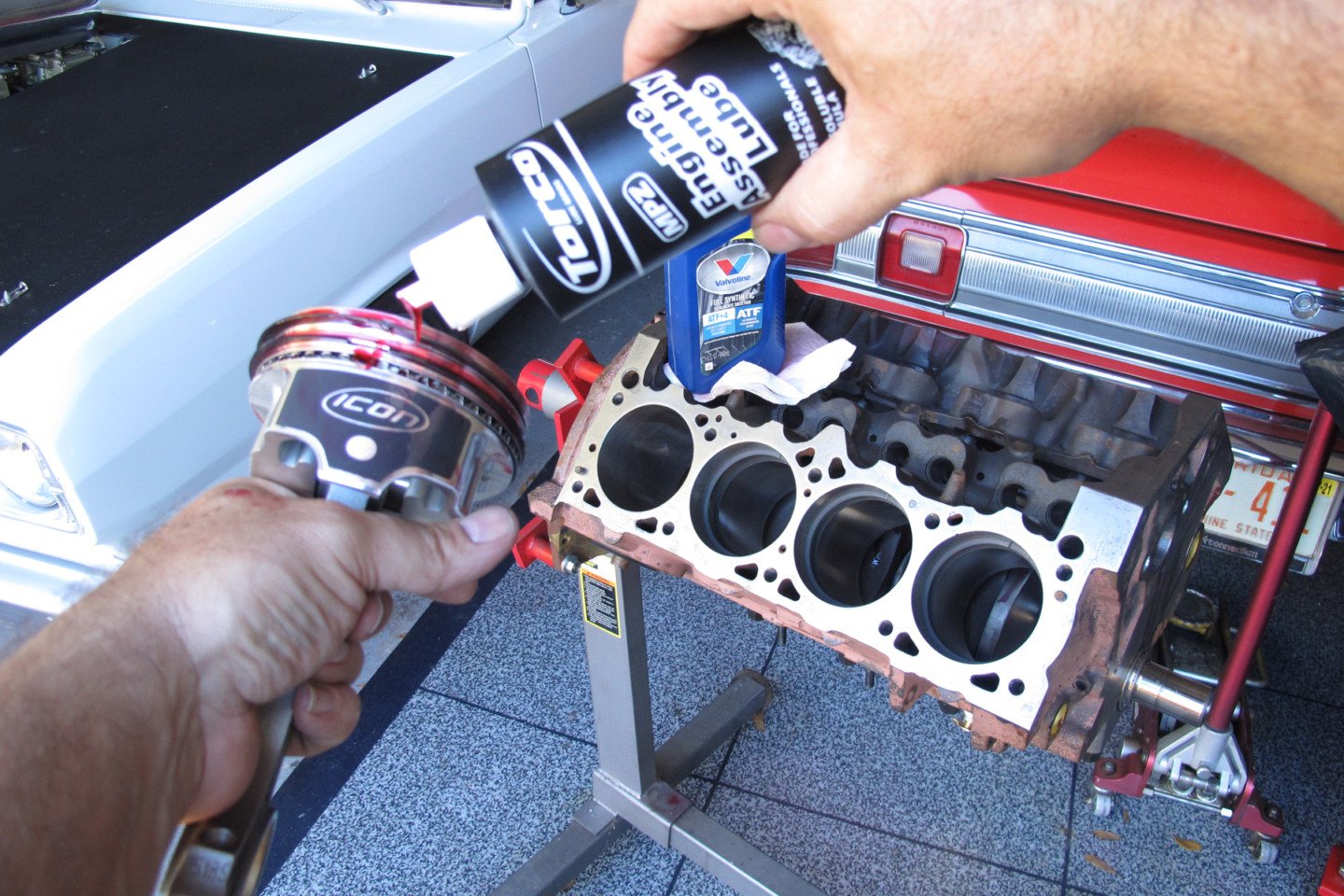Add description, images, menus and links to your mega menu
A column with no settings can be used as a spacer
Link to your collections, sales and even external links
Add up to five columns
Add description, images, menus and links to your mega menu
A column with no settings can be used as a spacer
Link to your collections, sales and even external links
Add up to five columns
Use Engine Assembly Lube Or Oil When Building An Engine?
January 11, 2022 3 min read
By RANDY BOLIG at EngineLabs.
When it comes to assembling an engine, there are many aspects that come into play. Proper machining, proper clearances, and even assembly processes need to be adhered to in order to achieve a positive result. But one thought process that causes a lot of discussion is, what to coat all of the internal moving parts with during assembly. Personally, I used to use a name-brand oil treatment to coat everything when I put an engine together. It’s sticky, so it clung to the parts until the initial fire up. But recently, I began to do some research into using an actual assembly lube, and that is when I learned about Torco MPZ Engine Assembly Lube.
I recently learned that using a quality assembly lube is one of the most important parts of an engine build. The reasoning can become all too apparent after an engine has been sitting for a while and not coating with a proper protective lube. If you simply coat all of your parts with engine oil, that coating can and will eventually drain off of the parts over time. When you do finally fire up your engine, the protective coating you applied during assembly will probably be in the oil pan before the first turn of the crankshaft. Basically, your previously applied protection is now useless.

When it came time to coat the bearings, the pourable lube and the grease make much less of a mess than the aerosol would.
Before I began assembling my latest mill, I decided to dive into the idea of using an actual assembly lube and that’s when the confusion started. Who knew there were so many variations. After some time perusing the internet to learn all I could, I looked at the Torco website and found three different assembly lube products (MPZ Assembly Lube). One is an aerosol, one is in a squeezable tube, and one is in a bottle.
To find out if I needed each container for use on different parts, I called the Torco tech line just to get an answer. I was told that all three are actually the same product, just with different delivery methods. I thought about that and realized how each method could have its place during assembly.
For instance, I used the pourable medium to coat the bearings, pistons, and cylinder walls while the aerosol was great for spraying on and around the wrist pins. I am certain the pourable lube and the squeezable grease could both be used in all of the same areas.

I asked the guy answering the Torco tech calls about using the assembly lube on the pistons instead of oil and he highly recommended doing so.
The containers I ordered are a 12 oz pourable “liquid”, an 8 oz. aerosol can, and a 5 oz. squeezable grease. I wasn’t sure which one I would prefer, so I had to try all three. I quickly learned I prefer the pourable medium. I am still in the assembly process, and while the “grease” and the “liquid” are very comparable in their usage, I have gotten comfortable with the pourable medium.
Whichever you feel would be the best option for you is a moot point as the delivery method is the only difference between them. I just know that from now on, the Torco assembly lube will be part of my rebuild process while the heavy oils and oil treatments are a thing of the past.
https://www.enginelabs.com/news/use-engine-assembly-lube-or-oil-when-building-an-engine/
Subscribe
Sign up to get the latest on sales, new releases and more …

